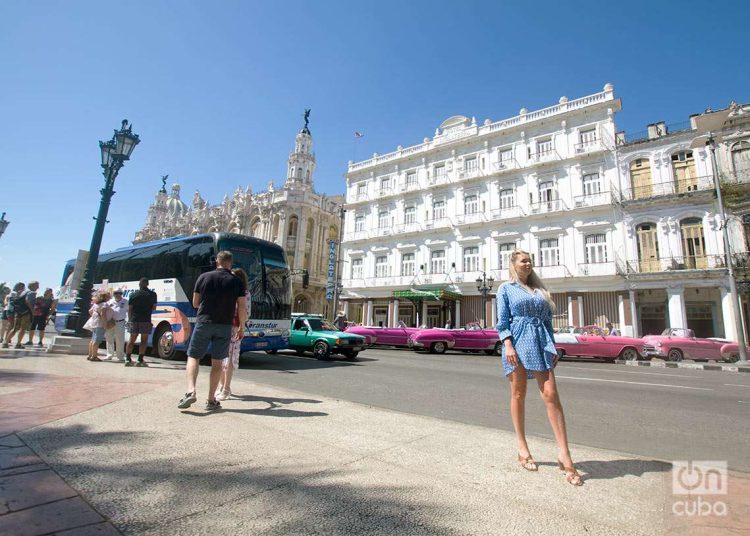Cuba received more than a quarter of a million tourists in January of this year, according to official statistics.
In total, 259,898 tourists arrived on the island in the first month of 2024, which represents an increase of 104% compared to the same period in 2023.
However, this means 47% less than in the same period of 2019, the year before the pandemic, as reported this Friday by the National Office of Statistics and Information (ONEI).
The figure represents a timid recovery in international tourism, in one of the main months of the high season in Cuba.
Among visitors in January, those arriving from Canada (127,172), the main issuing country, once again stood out.
The North American country had a year-on-year increase of 98.2% and was followed by Russia (22,272) — double the previous year, for a 216.8% increase — and the Cuban community abroad (21,910), which had an increase of 88.2%.
The Cuban authorities intend to receive more than 3 million tourists this year and recover the levels of a sector considered key to the economy, affected by one of the most serious crises in recent decades.
To achieve this goal, they have proposed a strategy that has among its fundamental challenges the growth of air connections.
The island received 2.4 million international visitors in 2023, a figure that represented a growth of more than 800,000 visitors compared to the previous year, according to official data.
Minister of Tourism Juan Carlos García Granda considered in a recent appearance that this result was insufficient for the sector to be “the locomotive that drives the economy.”
He also regretted that his country competes in “adverse and unequal conditions” in a “complicated” scenario due to the impact of the sanctions of the United States economic embargo.
In 2022, Cuba received 1.6 million international travelers and did not achieve its goal of hosting 1.7 million, which was readjusted from the initial forecast of 2.5 million. Although more tourists arrived than in 2021 (356,470), the figure was far from the levels of 2019 (4.2 million) and 2018 (4.6 million), the two years before COVID-19.
Currently, the situation on the island contrasts with similar destinations in the Caribbean region, such as Punta Cana (Dominican Republic) and Cancún (Mexico), which are registering historic highs in visitors after the pandemic.
EFE/OnCuba











If the number of tourists has more than doubled (an increase of 104%) how can that be classified as a timid recovery? Also a 216% increase in Russian tourists is not double, it’s triple the original figure.